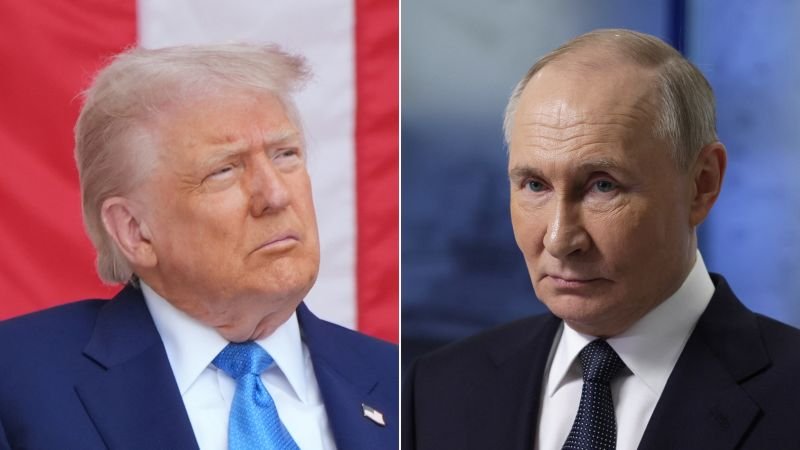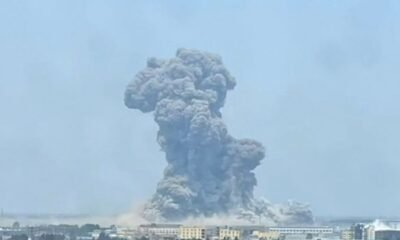CNN
—
The bodies of three of the four US soldiers who were reported missing after their vehicle was submerged in a bog in Lithuania last week have been recovered, the Army announced on Monday. The vehicle has also been recovered.
“The Soldiers we have lost in this tragedy were not just Soldiers – they were a part of our family. Our hearts are heavy with a sorrow that echoes across the whole Marne Division, both forward and at home,” Maj. Gen. Christopher Norrie, commanding general of the 3rd Infantry Division, said in a statement.
“We stand in grief with the families and loved ones of these extraordinary ‘Dogface Soldiers’ during this unimaginable time. But the search isn’t finished until everyone is home. Words cannot express our gratitude to those still working around the clock during these extensive search and recovery efforts and your unwavering commitment not to rest until all are found.”
Search and recovery operations continue to find the fourth soldier, the statement said.
The four soldiers were assigned to the 1st Armored Brigade, 3rd Infantry Division out of Fort Stewart, Georgia. Their identities are being until their families are notified.
Lithuania’s President Gitanas Nausėda said his country is mourning the loss of the soldiers.
“Lithuania mourns together with the American nation. Please accept my heartfelt condolences, as well as those of the Lithuanian people, to you, the loved ones of those who lost their lives, and all the people of the United States of America. During this difficult time, our thoughts and prayers are with you,” he said in a tweet that tagged President Donald Trump.
The soldiers and vehicle, an M88 Hercules, have been missing since the early morning of March 25 when they were conducting a maintenance training mission, recovering another US vehicle in a Lithuania training area. The M88 was found the morning of March 26; US and partner military forces have been working around the clock since to pull the nearly 70-ton vehicle out of the bog.
The recovery effort involved “tremendous resources from Lithuania,” as well as “hundreds of service members from the US Army, US Navy, Lithuanian Armed Forces and the Polish Armed Forces—along with other elements from the Lithuanian government and civilian agencies.”
Indeed, other officials have pointed to the recovery operation as a prime example of the importance of relationships with US allies abroad — a position that has been strained in recent weeks as Trump administration officials have railed against partner nations for not doing enough, largely regarding the war in Ukraine and NATO funding.
An Army official told CNN that troops on the ground “see things that others might not” regarding working with allies, and the recovery operation of the last few days has only further shown that.
“For us, that’s politics, that’s not our bailiwick. … For those that say our allies aren’t doing enough, those are people that didn’t see this,” the official said. “Those are people that didn’t pay attention to this, that weren’t watching. For all of us soldier, I think if I was the one in that Hercules, Lithuania is the country I would want helping to bring me home to my family.”
After finding the submerged vehicle, Lithuanian divers were on the scene “very rapidly,” Maj. Nicholas Chopp, spokesman for US Army Europe and Africa, told CNN. Poland also started mobilizing dozens of engineers and sappers, or combat engineers.
“There was literally chief of defense to chief of defense conversations happening between Lithuania and Poland” to coordinate support, Chopp said. He added that the Lithuanian defense minister and prime Minister were on the ground at the recovery site nearly every day, if not daily, to “come talk to the rescuers on the ground and say, ‘What do you need that you don’t have?’”
“It was an entire country bent towards these efforts,” he said.
The Army’s release on Monday said Lithuania provided helicopters, drones, fixed-wing aircraft, and search and rescue personnel, as well as excavators, pumps to get water out of the bog, various technical experts, and “other heavy construction equipment.” The Army official said Lithuania has not asked to be reimbursed for their efforts in the recovery, saying everything they’ve done “is out of pocket.”
The release on Monday also said the Archbishop Metropolitan of Vilnius “led a mass at the Cathedral Basilica of St. Stanislaus and St. Ladislaus of Vilnius, March 30, to pray for the four Soldiers, their families, and those conducting recovery operations.”
CNN’s Jennifer Hansler contributed to this report.


























